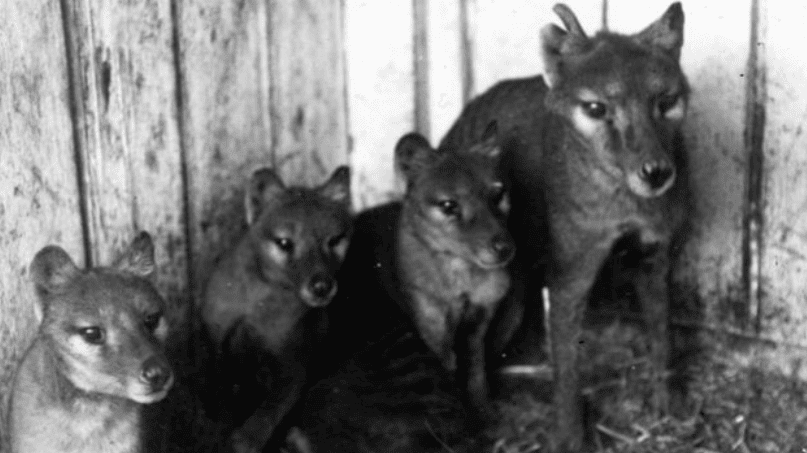Researchers have taken CT scans of preserved Tasmanian tiger joeys to help give them a better insight into the extinct animal and learn about the early development phases of the marsupials.
Tasmanian tigers were driven to extinction by hunters. Sadly, the last living Tasmanian tiger died in Hobart Zoo in 1936. However, 13 ethanol-preserved joeys remain.
Called a tiger due to its striped lower back, the animal is now the interest of study at the University of Melbourne, Australia. The preserved joeys are offering an insight into the animal’s early development phases.
Researchers used technology such as CT scans, to record changes in the animal’s skeleton and organs while it was growing in its mother’s pouch. Dr. Andrew Pask found that they begin life looking like other marsupials, but move towards looking more like dogs towards the end of the time in the pouch. However, they wanted to show the exact point at which this happens.
“So, when they’re first born they have these really well-developed forearms to be able to crawl from their mother’s urogenital sinus up to the pouch, and a really well developed jaw to be able to latch on to the teat. That’s quite different to us, or a mouse, say.It’s only really late on that they grow the extended hind limbs to give them that dog appearance,” he explains.
Tracking Down the Tasmanian Tiger Specimens
The process of getting the 13 ethanol-preserved joeys wasn’t easy. Four of the joeys were held in Prague, Czech Republic.
Meanwhile, two specimens, sent from the Tasmanian Museum and Art Gallery, weren’t Tasmanian Tigers at all. The researchers believe they were but quolls or Tasmanian devils which had been mixed up with the tigers.
However, once all were collected, the specimens were CT scanned. The animals were aged between 1.5 and 12 weeks. This enabled the scientists to dissect the joeys and build 3D models. They also 3D printed the models to get a better look too.
“Until now, there have only been limited details on growth and development. For the very first time we have been able to look inside these remarkably rare and precious specimens,” said Axel Newton, a PhD student and lead author on the Royal Society paper describing the investigation.
The aim for the researchers now is to find out how and why the marsupials evolved to be so similar to dogs. Especially as their last common ancestor lived about 160 million years ago. But, they hope that with these scans and genetic work, they’ll be able to come to some conclusions.
In the far distant future, the researchers also hope to be able to bring back a Tasmanian tiger. This could work by using another animal’s cells as a scaffold and inserting the genome to try and reconstruct the tiger. However, this is a long way off for now.
Source: BBC
Website: LINK



Schreibe einen Kommentar
Du musst angemeldet sein, um einen Kommentar abzugeben.